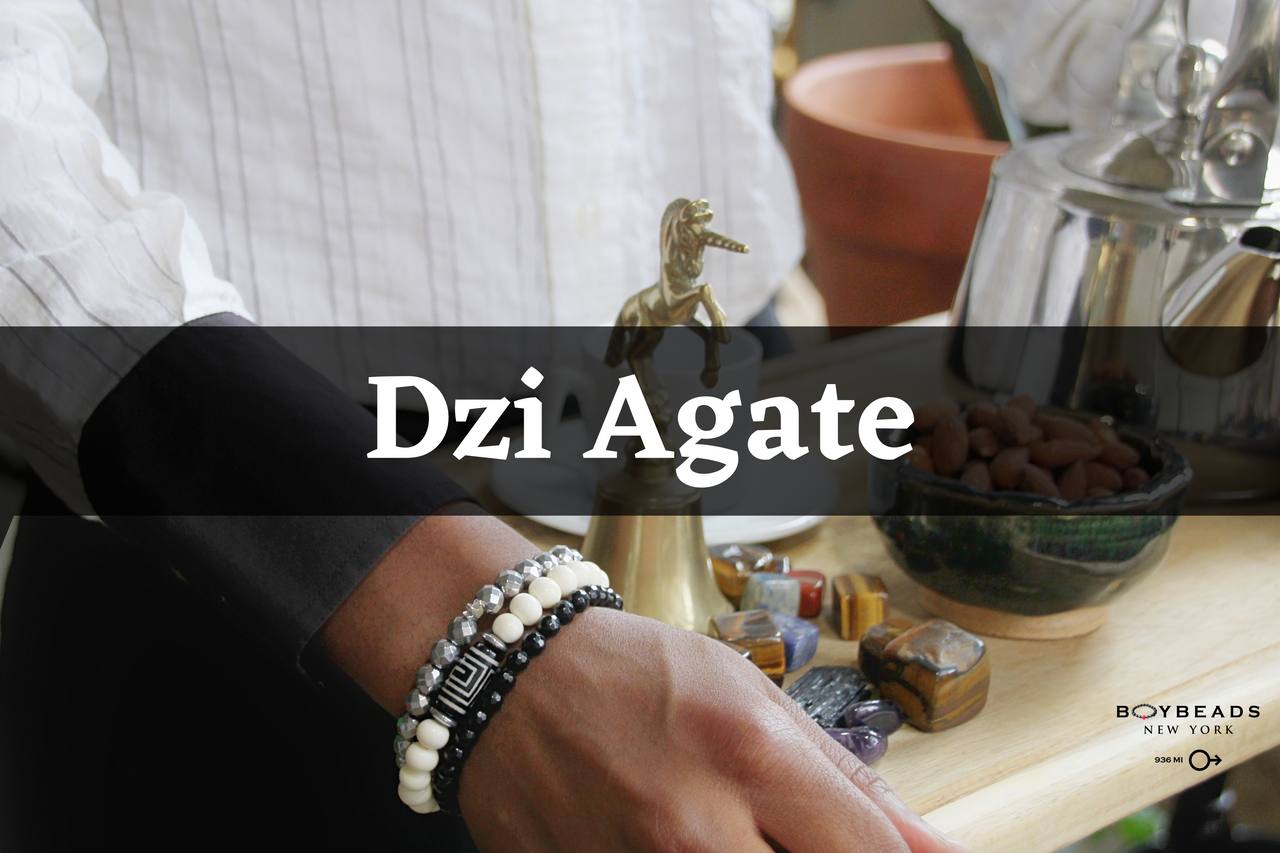There are no products listed under this category.

Tibetan Dzi

On the surface, some people just see a beaded bracelet and think of it as a simple fashion accessory and nothing more. Oh how much they have to learn about the vast art of jewelry! Everything means something- if you don’t know what yet, then you simply must learn. When I first discovered dzi beads I found them intriguing and wondered how they could have been made since each bead is slightly (sometimes vastly) different from all the others. There was a repeating pattern but the beads seemed to have been hand painted, which would have required much time and attention to detail. Six years later and I’m still learning about the world of dzi beads and the culture surrounding them.
What is Dzi?
Pronounced "zee"
Tibetan Dzi Agate beads are believed to have been created around 2000 B.C. and used primarily for spiritual protection, traditional medicine and jewelry. Opinions about exactly how dzi beads were originally made with such intricate designs in a time without modern technology are about as varied as those surrounding the construction of the Great Pyramids of Giza, Egypt.
Nobody really knows how they were made, but we can surely agree that they are quite beautiful. Our mock dzi beads are modern reproductions enhanced with technology and heat treated into genuine agate to replicate the ancient patterns of Tibetan dzi. Original Tibetan dzi beads can fetch upwards of $10,000 each at auction, depending on their condition and design. I don't know about you, but I feel fortunate to live in a time when simple commoners can wear the same jewelry as ancient royals.
Nine Circles
This particular dzi bead is patterned with 9 circles- three sets of three- enclosed in a zig-zag patterned maze. Somehow, it reminds me of a Victorian garden, intricately designed for both visual satisfaction and mental stimulation. The number nine is often associated with the completion of a cycle and the beginning of a new cycle. It is a number of compassion, love and caring for humanity.
Three Eyes
The round “eye” or circle on the 3-eyed dzi bead repeats three times around the bead. Each circle is connected to the previous circle yet distinct and separate.
"Among the dzi culture, the 3-Eyed Dzi is regarded as the unofficial “wealth”. This dzi is believed to still possess the power to make conditions favorable, for which the owner enjoys general fortune, not only in terms of wealth, but also great happiness and prosperity. It will enhance its owner’s ability to accumulate wealth by crystallizing money-making opportunities for him. It represents the three stars of luck including longevity with health and continuous fortune." - From http://dzikingdomgroup.com/description-of-dzi
